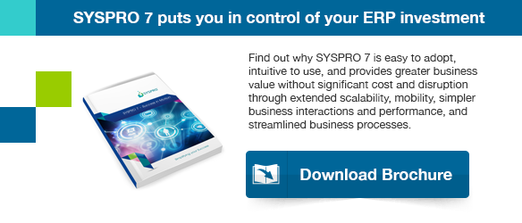Dean knew that there had to be a better way.
He’d been in manufacturing long enough to know that the millions of dollars and army of consultants that was being readied to integrate his operation with the parent company was a huge waste.
The worst part was that the standardized processes that his division was going to have to adopt were poorly suited to the facility.
Spending millions to reduce efficiency was a decision that he had to fight.
So he started doing his research…
(Names have been changed to protect the heroic.)
I recently had the opportunity to work with a new customer. They have a situation that, it turns out, is not that unique.
The corporate parent, a multinational corporation in the USA has invested heavily in a “tier 1” ERP system to support their corporate business processes. However their manufacturing plant, located in Canada, has a set of business requirements that are different than the parent, and they soon realized that their needs might not be best met by the corporate solutions.
The corporate software would be expensive to implement with ongoing costs to match for license fees and for IT support.
This is where the head of the Canadian plant came to us looking for an alternative that would be better for everyone concerned. We worked with him to develop a business case and sell the two tier solution.
SYSPRO is better for the plant. The tier 1 system was better for the multinational.
The executives at multinational headquarters rightly wanted all of their systems integrated. But they wrongly concluded that this meant one system.
We sold the head office on a two-tier solution with all of the important I-need-this-to-run-my-enterprise information syncing between the two ERP systems. All of the important I-need-this-to-run-my-plant details were kept locally in SYSPRO, and all at a substantially lower cost with a real return on investment.
The head office gets what they want. The local facility gets what they want. And they get it all at a lower cost.
As a sales professional this is what I call a “win.”
But as an IT and business professional, there is more to this story than just another “win.” There are some worthwhile lessons to take as well.
Perhaps the most important lesson is that no solution truly fits all situations. And just because you can get someone to pay more for something doesn’t mean you should. In this case everyone came to that decision.
Despite spending self-declared amounts of hundreds of millions to improve their offerings the big systems represent a codified way to do business.
The big tier one ERP solutions are like utilities—massive pieces of infrastructure that make modern business and modern life possible. And like all utility providers they come with the idea that there is one way to do things – theirs. And to be fair that’s why we have them.
Like utilities, tier 1 ERP solutions are huge investments that provide under-appreciated infrastructure that loses its value if it is not standardized. Imagine having to switch cell phones every time you drove in range of a different tower.
But the people with coal on their face often have business needs driven by their challenges. And for this they need flexible strategies and approaches.
That is where the real value of two tier ERP is found. It lets businesses access the benefits of global standardization while still embracing local innovation.








